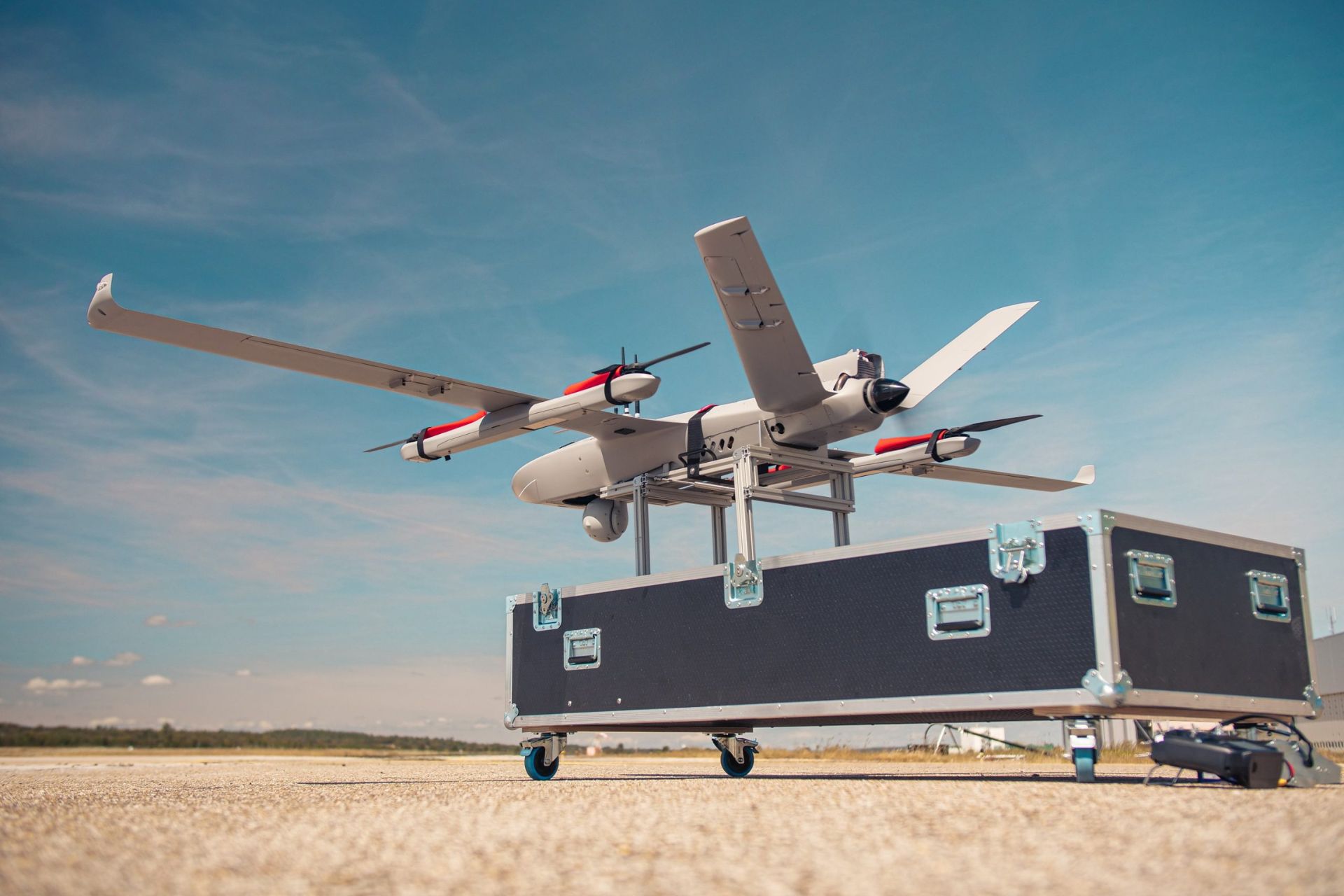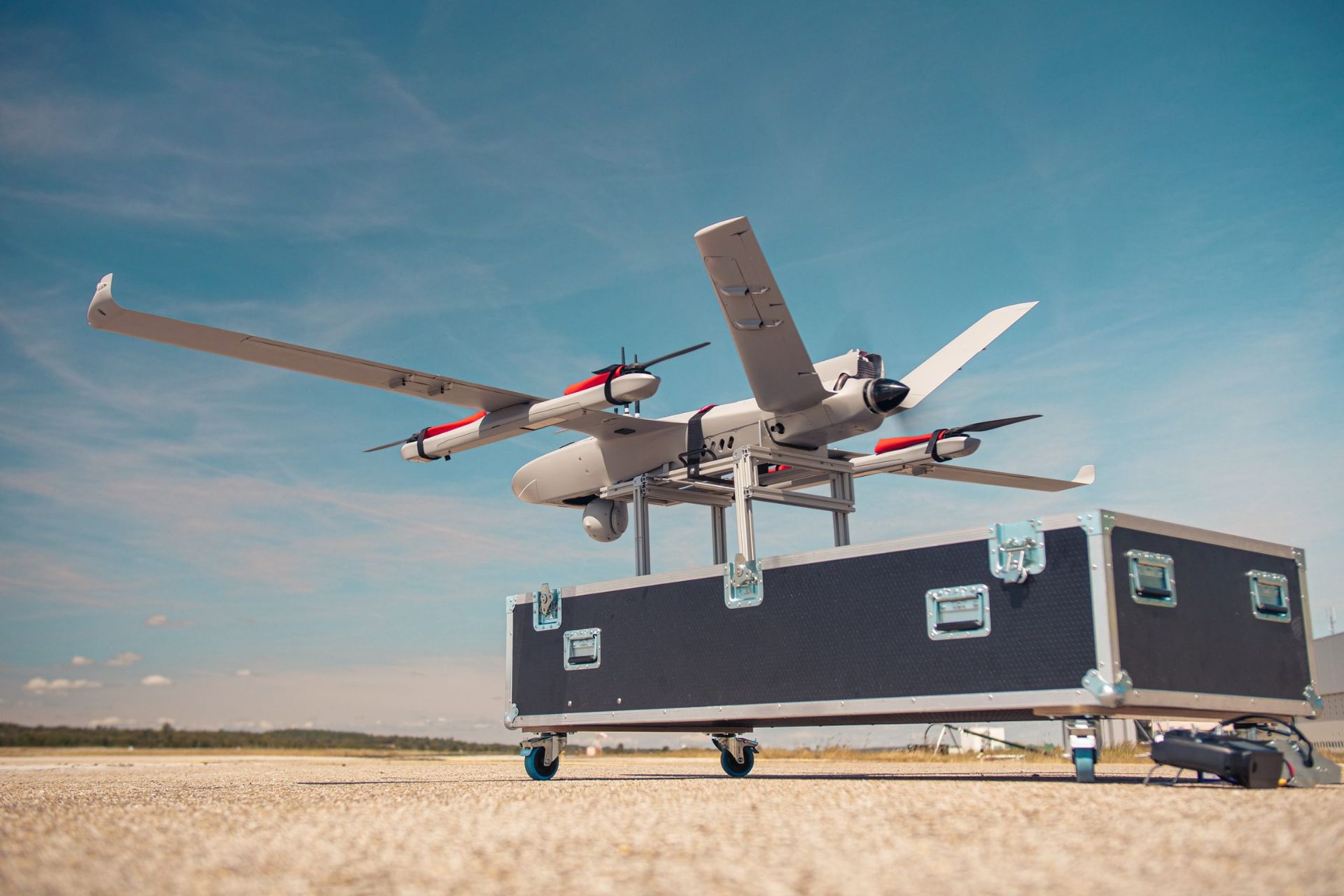TEKEVER Advances Drone Sonobuoy Launching Technology

{loadposition bannertop}
{loadposition sidebarpub}
During the REPMUS 2024 military exercise, TEKEVER unveiled new drone technologies, marking a major advance in the use of unmanned aerial vehicles (UAVs) for underwater threat detection. For the first time, a TEKEVER drone was used to deploy sonobuoys, offering enhanced capabilities for maritime surveillance and submarine detection.Follow Army Recognition on Google News at this link
During the exercises, TEKEVER’s AR3 and AR5 UAVs were deployed for intelligence, surveillance, and reconnaissance missions on land and at sea (Picture source: Tekever)
This technological breakthrough boosts maritime security by enabling underwater threat detection, including submarines, directly from drones. During the exercises, TEKEVER’s AR3 and AR5 UAVs were deployed for intelligence, surveillance, and reconnaissance missions on land and at sea. One of the key operations was the successful deployment of sonobuoys by the AR5 drone, allowing for the detection and tracking of underwater threats. This capability provides a strategic tool for end users to manage maritime security challenges in high-risk, unmanned scenarios, reducing human involvement in perilous operations.
The REPMUS exercise also showcased the integration of IMSAR’s Synthetic Aperture Radar (SAR) into the AR5 drone. This advancement, combined with the drone’s electro-optical/infrared (EO/IR) cameras and satellite communication (SATCOM) capabilities, reinforces the AR5’s role as a multi-mission platform capable of handling complex military operations in various environments. With real-time data collection, the AR5 proves to be a valuable tool in operations requiring continuous and detailed surveillance. Moreover, the AR5 demonstrated its versatility by performing automatic take-offs and landings on runways as short as 200 meters, illustrating its adaptability to different operational contexts.
TEKEVER also highlighted several other technological advancements at REPMUS. These include the integration of TEKEVER’s geospatial platform, Atlas, with Thales’ Spy-C system, allowing for seamless bidirectional communication and data sharing. This integration facilitates joint operations by ensuring smooth data flow, position updates, and real-time video streaming between platforms. The addition of IMSAR’s radar capabilities has further extended the operational range of the AR5, improving surveillance quality and providing unmatched situational awareness for both land and maritime missions.
TEKEVER’s participation in REPMUS 2024 illustrated the company’s ongoing efforts to advance drone technology for military applications. By reducing risks for human operators while delivering cutting-edge intelligence, surveillance, and reconnaissance capabilities, TEKEVER demonstrates a clear focus on optimizing security in critical military operations.
This technological demonstration, which includes drone-based sonobuoy deployment, radar integration, and the AR5’s multi-mission capability, represents a notable advancement in the use of UAVs for complex missions. As technology continues to evolve, these innovations could transform how maritime and military operations are conducted, particularly in high-risk environments where autonomy and the reduction of human risk become strategic priorities.

{loadposition bannertop}
{loadposition sidebarpub}
During the REPMUS 2024 military exercise, TEKEVER unveiled new drone technologies, marking a major advance in the use of unmanned aerial vehicles (UAVs) for underwater threat detection. For the first time, a TEKEVER drone was used to deploy sonobuoys, offering enhanced capabilities for maritime surveillance and submarine detection.
Follow Army Recognition on Google News at this link
During the exercises, TEKEVER’s AR3 and AR5 UAVs were deployed for intelligence, surveillance, and reconnaissance missions on land and at sea (Picture source: Tekever)
This technological breakthrough boosts maritime security by enabling underwater threat detection, including submarines, directly from drones. During the exercises, TEKEVER’s AR3 and AR5 UAVs were deployed for intelligence, surveillance, and reconnaissance missions on land and at sea. One of the key operations was the successful deployment of sonobuoys by the AR5 drone, allowing for the detection and tracking of underwater threats. This capability provides a strategic tool for end users to manage maritime security challenges in high-risk, unmanned scenarios, reducing human involvement in perilous operations.
The REPMUS exercise also showcased the integration of IMSAR’s Synthetic Aperture Radar (SAR) into the AR5 drone. This advancement, combined with the drone’s electro-optical/infrared (EO/IR) cameras and satellite communication (SATCOM) capabilities, reinforces the AR5’s role as a multi-mission platform capable of handling complex military operations in various environments. With real-time data collection, the AR5 proves to be a valuable tool in operations requiring continuous and detailed surveillance. Moreover, the AR5 demonstrated its versatility by performing automatic take-offs and landings on runways as short as 200 meters, illustrating its adaptability to different operational contexts.
TEKEVER also highlighted several other technological advancements at REPMUS. These include the integration of TEKEVER’s geospatial platform, Atlas, with Thales’ Spy-C system, allowing for seamless bidirectional communication and data sharing. This integration facilitates joint operations by ensuring smooth data flow, position updates, and real-time video streaming between platforms. The addition of IMSAR’s radar capabilities has further extended the operational range of the AR5, improving surveillance quality and providing unmatched situational awareness for both land and maritime missions.
TEKEVER’s participation in REPMUS 2024 illustrated the company’s ongoing efforts to advance drone technology for military applications. By reducing risks for human operators while delivering cutting-edge intelligence, surveillance, and reconnaissance capabilities, TEKEVER demonstrates a clear focus on optimizing security in critical military operations.
This technological demonstration, which includes drone-based sonobuoy deployment, radar integration, and the AR5’s multi-mission capability, represents a notable advancement in the use of UAVs for complex missions. As technology continues to evolve, these innovations could transform how maritime and military operations are conducted, particularly in high-risk environments where autonomy and the reduction of human risk become strategic priorities.




